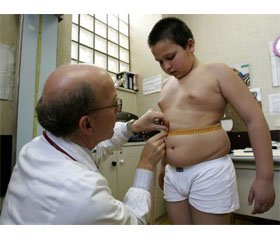Журнал «Боль. Суставы. Позвоночник» 1 (21) 2016
Вернуться к номеру
Association between oxidative/antioxidative status and bone turnover markers in the obese children
Авторы: Matusik P., Malecka-Tendera E. - School of Medicine in Katowice, Department of Pediatrics and Pediatric Endocrinology, Medical University of Silesia, Katowice, Poland; Olszanecka-Glinianowicz M. - School of Medicine in Katowice, Health Promotion and Obesity Management Unit, Department of Pathophysiology, Medical University of Silesia, Katowice, Poland; Chudek J. - School of Medicine in Katowice, Pathophysiology Unit, Department of Pathophysiology, Medical University of Silesia, Katowice, Poland
Рубрики: Ревматология, Травматология и ортопедия
Разделы: Медицинские форумы
Версия для печати
The article was published on p. 78-79
Background. Recent data showed that some bone related markers (osteocalcin, 25OHD3) correlate with body mass index (BMI) in the pediatric population. From the other side, obesity in childhood can increase the risk of cardiovascular morbidity and mortality in adulthood. Increased oxidative stress and low antioxidative status can be the causative mechanisms involved in the pathophysiology of almost every complication in obesity.
The aim of this study was to determine the relationship between bone turnover markers, nutritional status and oxidative/antioxidative status markers, in obese children comparing to the lean control group.
Material and methods. Bone turnover markers (osteocalcin (OC), N-terminal telopeptide of type I collagen (NTx), sRANKL), oxidative stress markers (TAC — total antioxidative capacity, glutathione peroxidase, oxy-LDL) and leptin were determined in 56 obese children and 73 healthy controls. Nutritional status by BMI calculation and body composition parameters as: fat mass (FAT), fat-free mass (FMM), predicted muscle mass (PMM) and total body water (TBW) were evaluated using bioelectrical impedance analyzer in all children.
Results. OC was significantly lower in obese children and correlated significantly (negatively p < 0.01) with BMI in the lean group. There was also significant positive correlation between OC and TAC in obese children. NTx correlated significantly with oxy-LDL (positively) in either, obese and lean group (p < 0.05 and p < 0.01 respectively). In the lean group only, there were significant relations between NTx vs. leptin and body composition parameters (r = 0.245 vs. leptin, r = 0.245 vs. FAT%, r = –0.252 vs. PMM%, and r = –0.245 v. FFM% respectively). There was no significant correlation between RANKL and every other parameter assessed in both studied groups.
Conclusions. 1. Bone turnover seems to be disturbed in the obese children and pathophysiological factor which can be involved in that mechanism may be an increase oxidative stress level. 2. Even in lean children nutritional status is inversely and directly related with osteocalcin and NTx respectively.

